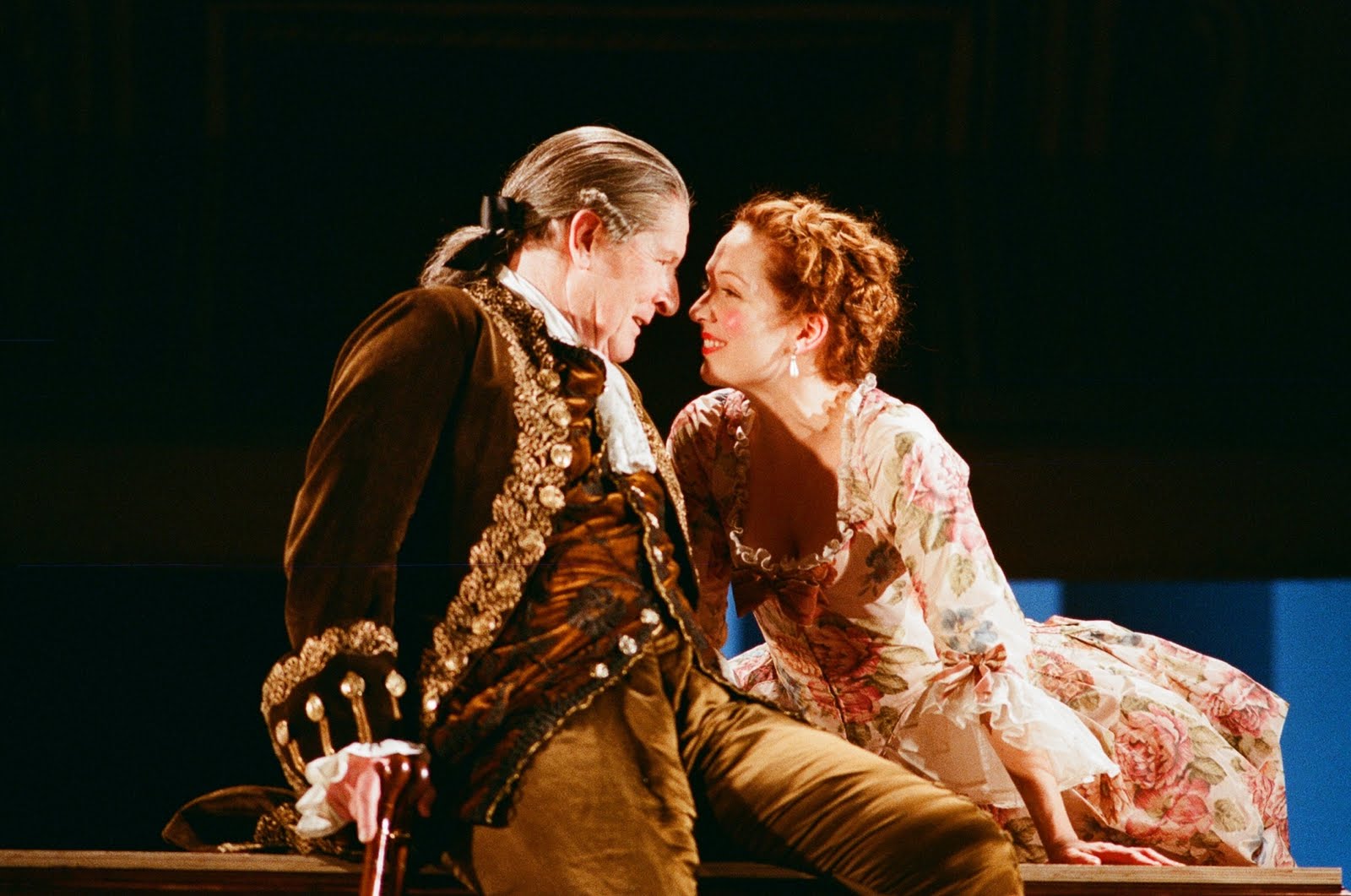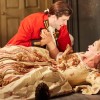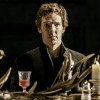The School for Scandal, Barbican Centre
reviewed for The Spectator, 27 May 2011

Deborah Warner’s latest production tries so hard to be outrageous, one almost wants to fake shock out of pity. When The School for Scandal first opened in 1777, it was lauded for its witty dissection of a shallow society obsessed with rumour and status, what William Hazlitt called ‘the habitual depravity of human nature’. Layer on a proliferation of iPhones, parade a line of Gucci bags on stage, and fuss around with several gratuitous rounds of coke-sniffing before the first scene is over, and Warner has found a quick-cook, no-thought-required recipe for a pop-art take down of our continuing, contemporary depravity.
It’s all earnestly ‘relevant’, labouring the need to justify Sheridan’s pertinence to the 21st Century as if we audience members might not get it on our own. Fortunately, nothing can blunt the sharpness of his dialogue, and underneath the superimposed concept, there are some supremely moving performances struggling to get out.
Katherine Parkinson, in particular, is excellent as Lady Teazle, the country girl whose marriage to a wealthy older man brings her to London, eager to establish her credentials as ‘a lady of fashion’. After her success on The IT Crowd, she’s the obligatory young TV star in the cast, but the deftness with which she layers Lady Teazle’s new-found hardness over her insecurities is a timely reminder that she has always been a seriously talented stage actress.
Yet it is Alan Howard as her husband, Sir Peter, who really holds this production together. Unable to comprehend her new lifestyle, he sees only her gradual corruption and none of the social pressures which lie behind it.
Warner populates her stage with stereotypes: in the long catwalk show that plays as the audience members take their seats, the vast supporting cast parade placards like Brecht on speed, labeling their ‘stage types’ as ‘a man of sentiment’, ‘beauty’s superlative’ or a man with ‘nothing but infamy to depend on’. Surrounded by these cardboard cut outs, Sir Peter and Lady Teazle are the only believable characters onstage.
They are helped by John Shrapnel as the returning colonial, Sir Oliver, shocked at the moral decay he finds after a fifteen year absence – Shrapnel is a theatrical veteran who looks like he’s having plenty of fun with his multiple disguises and middle-aged swashbuckling.
And Warner’s production, for all its faults, is fun. The opening catwalk – although it will seem interminable if you take your seat too early – injects a shot of high energy into the opening scenes, and Kandis Cook’s costume designs are enthralling entertainments, in which Rocco panniers are stripped away to reveal contemporary high-fashion underwear and plastic boots. If only Warner was content to let them be background to the quality of the acting, and didn’t impose so much unsubtle stage business around them…
The energy dissipates into an oscillation between hyperactivity and listlessness, most obviously in the ensemble cast of snobs and rumour-mongers. Matilda Ziegler is compelling as the scheming Lady Sneerweel, an older cousin of Marquise de Merteuil in the Les Liaisons Dangereuses, but she’s drowned out by the one-note histrionics of Harry Melling and Stephen Kennedy, flailing and bellowing like escapees from a Channel 5 investigation into homoerotic undercurrents in the Bullingdon Club.
This tension between listlessness and hyperactivity reaches its zenith in Leo Bill’s Charles, whom Warner has transformed from misunderstood hero into a Pete Doherty figure so unattractive it’s difficult to see why everyone comes round to finding him so charming and redeemable. Hazlitt might have talked of man’s depravity in reviewing this play, but he also rightly argued that ‘there is a genial spirit of frankness and generosity about it… it professes a faith in natural goodness’.
Charles may have some natural goodness – he gives his last pennies to a poor relation because he’s too strung out to think straight – but the world he inhabits, entertained by twitching madmen, inviting his business associates to near-orgies, bears witness to Warner’s dark conception of contemporary Britain more than it does to Sheridan’s nuanced understanding of the path to redemption.
This obsession with contemporaneity no doubt makes a claim for the timelessness of Sheridan’s work. But by dragging the play forwards, it obscures the many ways in which Sheridan’s play looks back to a longer literary tradition. The theme of the wealthy benefactor returning in disguise to assess his heirs’ moral character comes straight out of the Roman playwright Plautus, as does the happy ending, engineered by the wise servant of the reckless but warm-hearted young man.
Meanwhile, the shadow of Shakespeare hangs heavily over Sheridan – his social critics discuss Shakespeare’s pre-eminence as ‘bard’, with all the romantic nationalism the word implies; his Jews discuss whether they should be taken for Shylock, while at one point a bust of Shakespeare seems to intervene in Sheridan’s own narrative, deflecting a bullet and changing the course of lives – until, like so much in Sheridan, the story is exposed as fiction.
None of this might matter, if it didn’t testify that the relationship between 18th Century text and 21st Century audience is more complicated than Warner lets on, not a one-to-one mapping between prescience and present, but a tapestry of influences, of long-term evolution.






